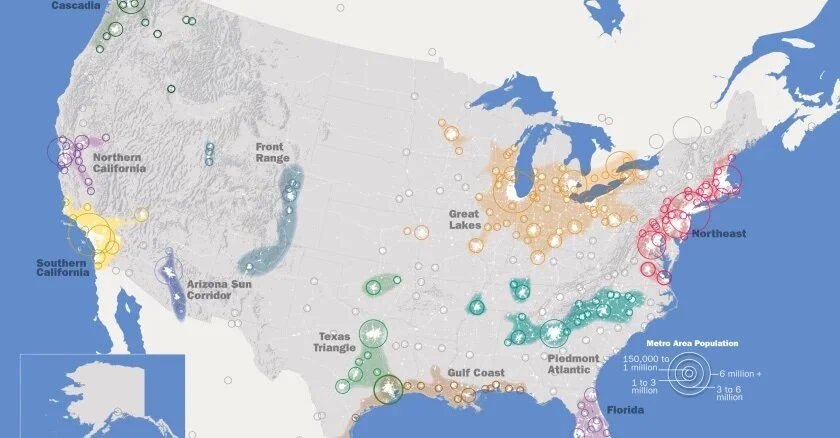
Insights
Expert analysis and thought leadership for those committed to driving meaningful change.

Meet Jan Maceczek
At LDR we believe that great people make great teams, which is why we’re highlighting our amazing team members and their contributions. Our first employee spotlight features Jan Maceczek.

Why Infrastructure Spending Should Empower Megaregions
Changing decades-old formulas for infrastructure funding and how the money is distributed are not new topics for discussion. As a nation, we have been arguing over this approach for more than a generation. While the importance of infrastructure makes intense debates appropriate, one critical element of such policy is often overlooked: the role and importance of large population clusters — “megaregions” — within and between adjoining states. The infrastructure debate must start including a discussion on how to further empower regional governing bodies to effectively accelerate megaregional infrastructure projects already identified as feasible and desired in local communities.

For Transportation Infrastructure, Look to Cities to Do It Right
2021 brings the promise of a major evolution in our nation's transportation infrastructure. From funding to policy, signaled changes in the interactions between federal and local government will catalyze smarter, cleaner and more resilient transportation solutions. Cities will become more important than ever. As rhetoric from the Biden administration leading up to the inauguration suggested, cities are best positioned to execute this task. Some have already jumped at the opportunity to boldly lead.

Entering the age of community-built infrastructure
A P3 structured with a PMO, or a P4, alleviates funding, time, and structure constraints for leaders to achieve complex goals related to infrastructure, innovation, and inclusion. The P4 organization integrates community stakeholder perspectives and a cross-functional team of professionals to reduce upfront costs and improve accountability, decision making, and implementation speed across the infrastructure value chain.

Cities can leverage program management to drive smart solutions
As we look toward 2050, our local governments' infrastructure needs are growing in complexity and cost. A focus on smart city technologies makes it easier to identify relevant and available community solutions. State and local governments have an immediate need for more aggressive regional smart city infrastructure efforts, and independently established smart city programs guided by specialized management teams can meet this need.

Case Study: Responding to the Impact from Hurricane Harvey
In response to the devastating impact left by Hurricane Harvey, the Fairfax Family rallied together to help rebuild. The service trip, known as Operation Helping Hands, brought together 22 volunteers from five different Fairfax companies - LDR, Northbridge, Riverstone, TheZenith, and Crum & Forster. The volunteers converged in Houston, Texas in early March for four days of service and camaraderie.

Welcome to the New LDR Advisory Partners

Post-coronavirus economic recovery requires EV adoption
The next federal stimulus bill should include three objectives to create a healthier economy: more access to EV charging stations, electrification incentives and support of grid-level demand.

Using P3s for Coronavirus Response
We must do our part to drive cooperation between the public and private sectors, and rethink the definition of resiliency given our newfound understanding for what is at risk.

The Revolution: Autonomous, Connected, Electric and Shared Vehicles
A Canadian insurer recently unveiled plans to integrate insurance products within Autonomous, Connected, Electric, and Shared Vehicles (ACES) and brought in LDR to provide strategic advisory, market intelligence, and project management services. This report summarizes our intelligence findings.

The Key To Combating Disruption? Relationship-Based Innovation
In today’s business world, disruption is a dominant part of the conversation. Corporations have begun to prioritize innovation to ignite growth and keep pace with a constantly shifting landscape. But acknowledging the importance of disruption is still relatively new. Even just 10 years ago, nobody could’ve predicted the magnitude of change to come.
